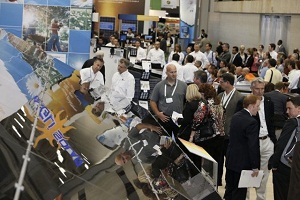Reviewing last week's solar energy news
 Last week the U.S. solar industry held their annual lollapolooza, Solar Power International (SPI), in Dallas. The annual event is a hotbed for new product announcements and new projects. But there was so much going on last week that the news couldn’t be contained to just the event in Dallas.
Last week the U.S. solar industry held their annual lollapolooza, Solar Power International (SPI), in Dallas. The annual event is a hotbed for new product announcements and new projects. But there was so much going on last week that the news couldn’t be contained to just the event in Dallas.
Certainly SPI was some of the biggest news, however. The event moved from California for the first time because it was too large for convention centers in the Golden State. Indeed, all booth space was sold out in Texas and about 21,000 solar industry members and enthusiasts were expected to attend.
One focus at SPI was women in the solar industry. While solar is certainly not a network of stuffy old boys, the industry, like most others, has generally been led by men. That’s changing and at the Professional Women in Solar Breakfast, female solar executive discussed the need to encourage more women to join leadership roles in the industry. One of the most important things is to encourage girls to engage in science and math at young ages.
On the other side of things, there are still those entrenched views of women, edified by show girls, or “booth babes.” You know, the girls who stand beside the latest car at a car show to show off its sexy lines. There were some companies at SPI that used such promotional tactics, but one has to wonder whether or not booth babes are needed to showcase solar.
At the show last week, The Solar Foundation released the National Solar Jobs Census 2011. The second annual release of the report found the U.S. solar industry is adding jobs at nearly 10 times faster than the rest of the U.S. economy. The report found that the domestic solar industry now supports 100,237 jobs, growing at an annual rate of 6.8 percent. The overall U.S. economy added jobs at an annual rate of 0.7 percent.
Still, the U.S. solar market is facing some challenges. For instance, Sunpreme, a California-based company, recently secured $50 million to build a solar manufacturing plant in China. The company makes photovoltaic cells from metallurgical-grade silicon—lower quality than the electronics-grade silicon in most solar cells. The company’s SmartSilicon may cost as little as one-tenth of other photovoltaic technologies, according to the company.
Another California solar manufacturing company, Silevo, also announced that it would move manufacturing to China. The company said the incentives offered and low-cost of producing in China outweighed those offered in the U.S., despite looking at locations including Arizona, California and Oregon for its first manufacturing plant. However, it may open future manufacturing plants in the U.S.
In the U.S., one of the leading growth sectors is residential solar. And that’s increasingly being driven by residential third-party owned systems, which offer homeowners leases or power-purchase agreements to go solar with little or no up-front costs. Indeed, a new SunRun report showed that such options have outpaced the number of residents installing solar in California, the largest residential market in the country.
Another approach to increasing awareness of solar options for residents and small businesses is through a familiar interface, like a retail store. California-based Stellar Solar recently opened up their first retail store, which helps educate consumers about the benefits of going solar. The company will hold its grand opening in San Diego on Oct. 26, this week.
The Association for Advancement of Sustainability in Higher Education (AASHE) said the number of solar installations at post-secondary education facilities (colleges and universities) in the U.S. jumped by 450 percent over the last three years, between 2008 and 2011. AASHE also released a new database, allowing people to learn more about the facilities. In all, 137 megawatts are installed at colleges and universities in the U.S. at this point.
Image courtesy of SPI’s Facebook page.



